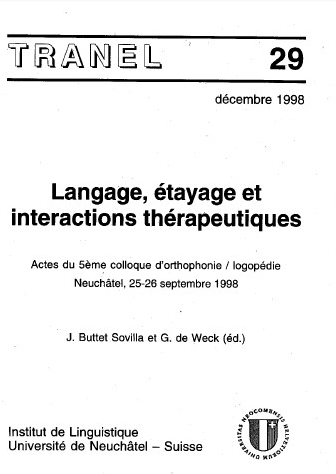Stratégies d'étayage avec des enfants dysphasiques: sont-elles spécifiques?
DOI :
https://doi.org/10.26034/tranel.1998.2653Résumé
Child-adult dialogues hold a major position within an interactionist approach of linguistic capacities regarding the appropriation of different linguistic behaviors because of the scaffolding provided by the adults. Concerning children with langage impairments the following question arises: do such interventions have a certain specificity?
More precisely, after reviewing the different forms of scaffolding and their variations in children with and without language impairments, we present some of our own research. After having defined different scaffolding strategies, we shall precise their forms and fucntions as well as the way they are articulated at different levels of discourse practice. Some examples will illustrate the commonalties and differences observed as a function of the presence/absence of language impairment in pre-schoolers.


